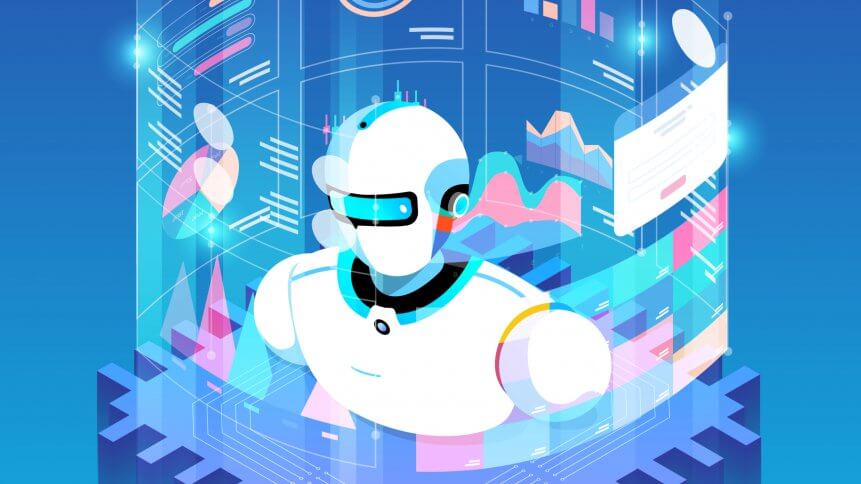Why we should use today’s downtime to train ML systems

- AI and machine learning will continue to play a growing role in post-pandemic business
- Businesses can capitalize on ‘downtime’ to explore applications of this technology
- Now could be the time to find “high payoff, low-risk” opportunities for AI and machine learning
The maxim “never let a good crisis go to waste” is particularly apt right now. (Rahm Emanuel said this, although it’s often attributed to Winston Churchill). For some, especially first responders, the crisis looks like an overwhelming challenge every day. For many businesses, though, the crisis looks like downtime.
Covid-19 has closed schools, restaurants and many businesses, and the re-opening is a slow stepwise process. During difficult economic times, it’s natural to hunker down, but don’t let the crisis go to waste. Use this valuable downtime to better position your company for the future.
Whatever the ‘new normal’ looks like, machine learning and, more broadly, artificial intelligence (AI) is part of it. Advancements in machine learning and AI have huge potential in many domains. Applications of machine learning and AI technology commonly in use today include:
- Automation solutions including robotic process automation (RPA) are eliminating hours of administrative tasks for employees, increasing productivity and time utilization.
- Advanced relationship mapping and prediction tools are driving faster and smarter ways to approach new business development.
- AI-powered data enrichment is delivering unparalleled data quality for sales and marketing teams.
The key is to surface low-risk, high reward business solutions to ensure your organization continues to thrive, while also weathering the effects of an economic downturn.
Why now?
Many organizations haven’t found the time to explore machine learning and AI yet – Gartner’s CIO survey reports that only 14% of enterprises have deployed AI, despite 91% having an intent to deploy it.
Machine learning and AI remain ‘high promise’ technologies that have potential but take time and focus to work through. During busy times, the urgent and immediate projects can crowd out longer-term efforts. A period of downtime is a great opportunity to get focused and test some machine learning-based predictions.
There’s a well-known talent shortage around data science and machine learning, which has slowed many organizations. However, a new generation of autoML tools has emerged that makes data scientists much more productive, and approaches that put autoML into the hands of less specialized developers are now available.
Most importantly, business involvement is more possible during a downturn – and this is a critical, often overlooked, factor for AI and machine learning success.
Avoid these traps
While it’s a great time to “sharpen the saw”, training AI systems is a bit different to training people. Machine learning generates models based on the data you feed it, and these models can be applied on an ongoing basis, although they often work best if the new data has the same characteristics as the training data.
If you train on today’s business data during a downtime period, tomorrow’s data during a recovery period will likely be different, so the model will be less accurate. If trained on yesterday’s ‘normal’, tomorrow’s new ‘normal’ may not look the same. It’s appropriate to train on the data available, explore potential applications and identify a couple of “low-risk, high reward” areas.
Don’t just rush these into production blindly, though. Expect to retrain or adjust your models, and monitor models in production for the “drift” found when the current conditions deviate from the training conditions.
Seize the day while you can
This is a great time to encourage experimentation and facilitate organizational learning as well as machine learning. AI and machine learning projects rely deeply on cross-functional collaboration; the new work-at-home operations are actually well suited to this, since they remove the differences in geographical distance that keep many groups in silos.
It is essential to focus on real value creation, not just learning for its own sake. Identify the right use cases by involving multidisciplinary teams, then quickly evaluate the potential business value, and create a Proof of Concept (POC). Next, leverage the POC to identify lessons, requirements, and any potential roadblocks that may arise when scaling up the POC into a fully-fledged machine learning project.
This is also a great time to clean up your data to maximize potential new business growth. Think of it as the spring clean that there normally isn’t time for. Poor data quality costs businesses around US$700 billion a year, or 30% of an average company’s revenue.
And, according to a Salesforce Research report, up to 70% of the data in your CRM will become obsolete or out-of-date in a given year. This area of your business can very likely benefit from recent advances in AI technology.
Smart investing during a downturn is as much about where you spend your time as where you spend your money. Machine learning and AI can be applied with very little capital investment – it’s a matter of exploring the new technology and new potential areas with a positive, experimental mindset, even if your instinct is to hunker down and go dormant.
If you use this time to find high payoff, low-risk opportunities for AI and machine learning, you’ll come out of it with a competitive advantage. Take advantage of the crisis – train your people, but especially train your machines.
This article was contributed by Jeff Fried, Director of Product Management at InterSystems.










